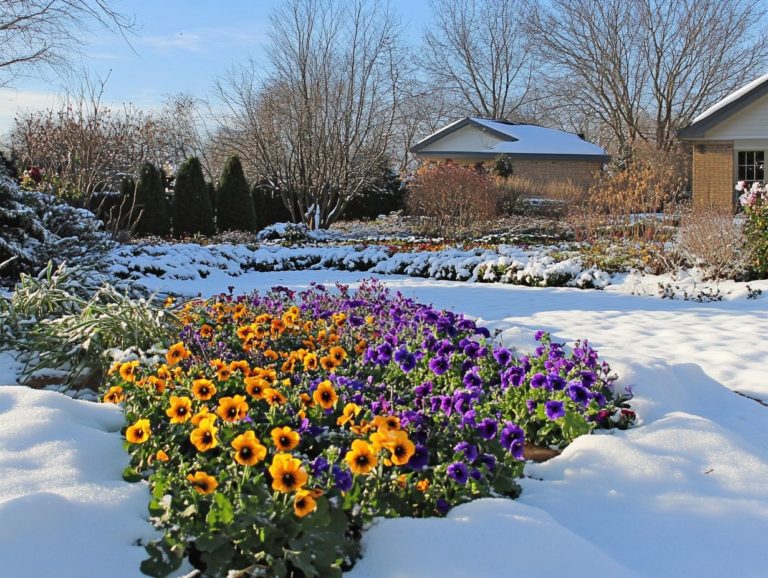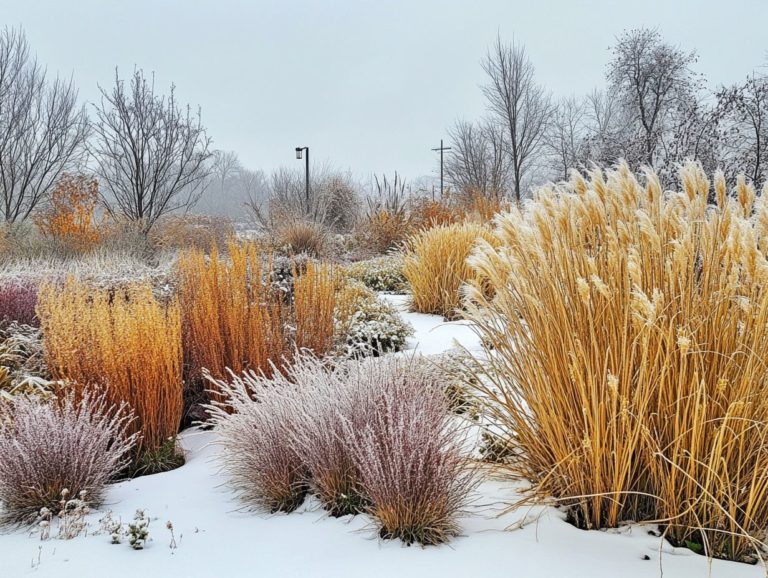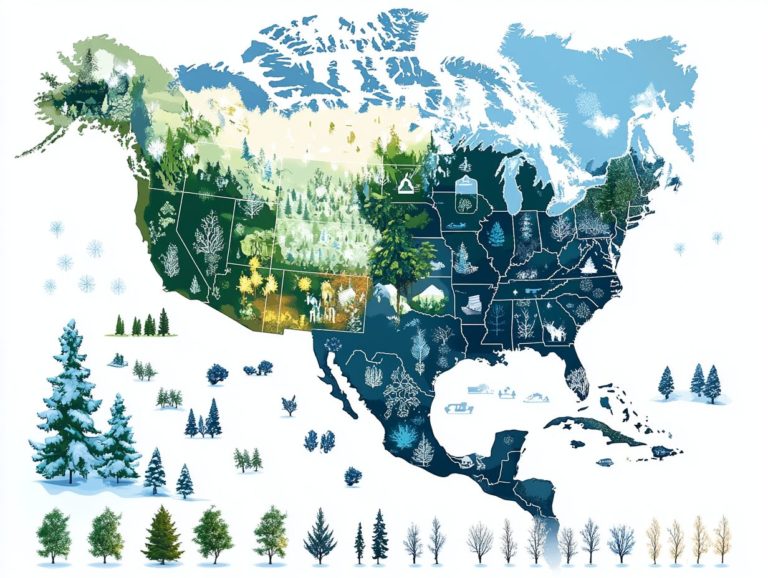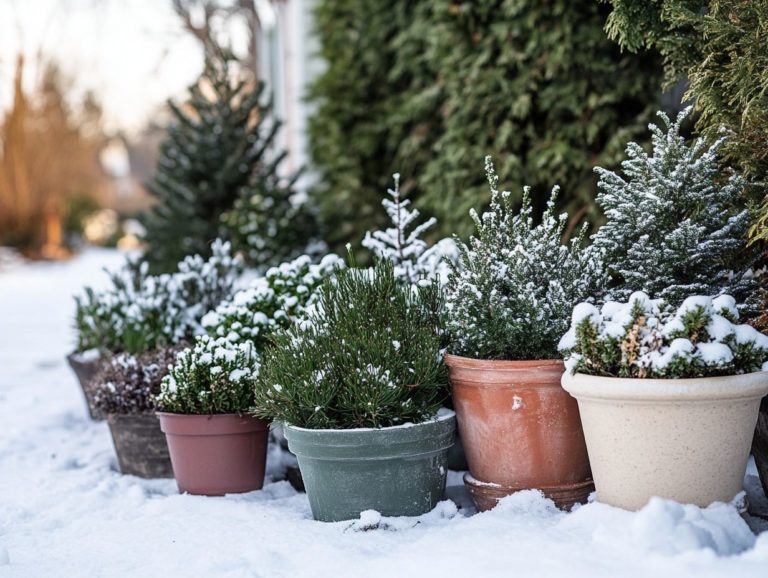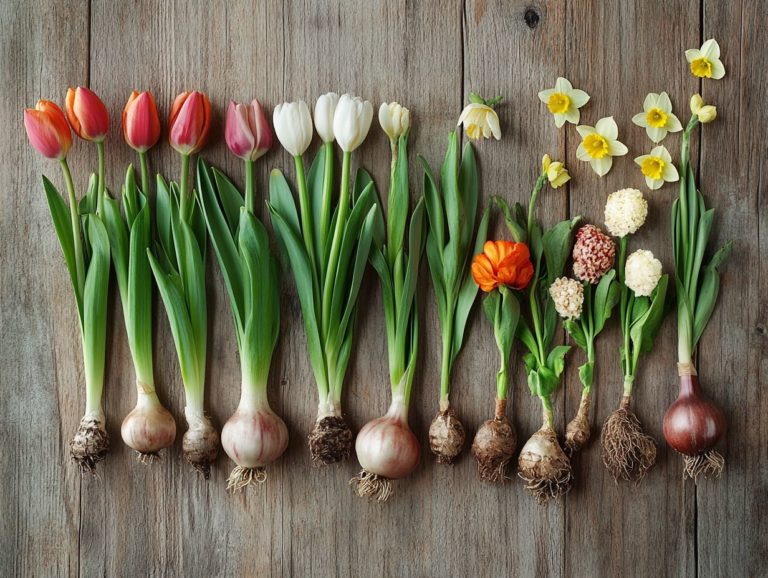Best Practices for Plant Care in Cold Climates
Gardening in cold climates? It s a challenge, but don t worry! Here s how to make your plants thrive even in the coldest weather. Cold climates, often referred to as gardening zones, can present unique challenges for gardeners. However, with the right knowledge and preparation, you can ensure that your plants thrive even in the harshest frigid temperatures.
This article delves into how cold weather affects plant health. It provides practical steps to protect and nurture your greenery through winter and into early spring. By understanding the effects of temperature and selecting cold-resistant varieties, you ll discover valuable tips that will help keep your garden flourishing, no matter how chilly it gets.
Contents
- Key Takeaways:
- The Effects of Cold Climate on Plants
- Preparing Plants for Winter
- Caring for Plants During Winter
- Plant Care in Early Spring
- Transitioning Plants from Winter to Spring
- Dealing with Frost and Freezing Conditions
- Strategies for Protecting Plants from Frost Damage
- Choosing Cold-Resistant Plants
- Best Plant Options for Cold Climates
- Frequently Asked Questions
- What are some general best practices for plant care in cold climates?
- How often should I water my plants in a cold climate?
- What types of plants thrive in cold climates?
- How should I prepare my plants for the winter in a cold climate?
- What are some signs of frost damage on plants?
- Is it necessary to fertilize plants in a cold climate?
Key Takeaways:
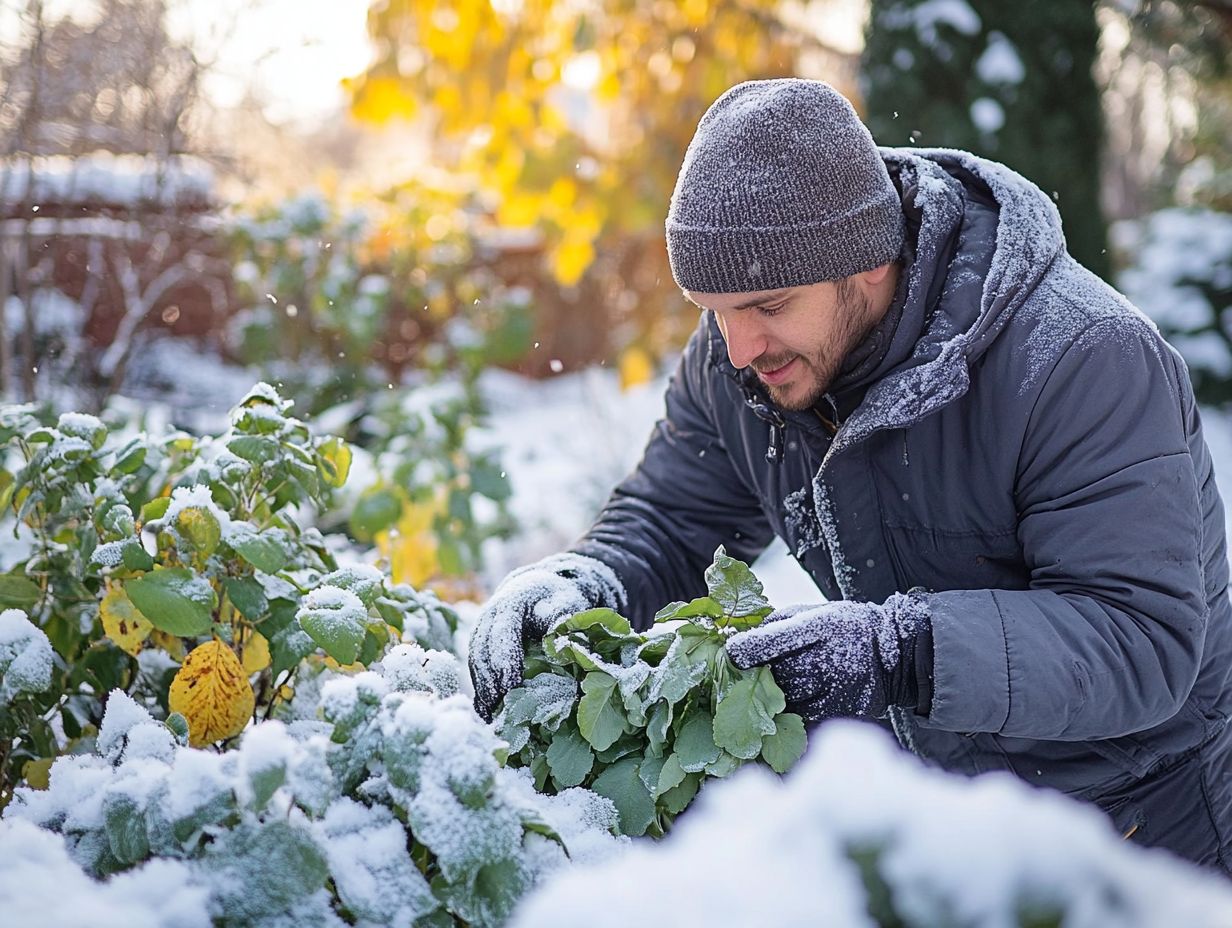
- Understanding the impact of temperature and weather is crucial for preparing plants for cold climates.
- Proper watering, nutrient levels, pruning, and maintenance techniques are essential for winter plant care.
- Choosing cold-resistant plants and using protective strategies can help prevent damage from frost and freezing conditions.
The Effects of Cold Climate on Plants
Cold climates, like those in Wyoming, profoundly affect plant growth and health. They pose unique challenges for local gardening enthusiasts.
The harsh winter conditions significantly influence your choice of plants, gardening techniques, and overall strategies for fostering healthy growth. Elements such as frost dates and small areas with different weather conditions (microclimates) are important. They guide your decisions on whether to use raised beds or tools to protect plants from cold, like hoop houses and greenhouses.
Grasping these dynamics is vital for thriving in gardening in regions characterized by extreme temperatures.
Understanding the Impact of Temperature and Weather
Temperature and weather conditions play an important role in shaping your gardening practices. This is especially true in regions like Wyoming, where fluctuations can be dramatic.
Pay close attention to soil temperature and prevailing weather patterns throughout the seasons. This is crucial when selecting heirloom seeds and other varieties suitable for colder climates. These factors determine when to start seed planting and significantly influence how well your plants establish and thrive.
Variations in temperature can affect seed germination rates. This means some plants may flourish while others struggle to survive. By understanding the specific temperature ranges that different species prefer, including potatoes and carrots, you can refine your planting strategies for improved harvests.
To adapt effectively, regularly monitor local forecasts and soil temperatures. Techniques like using row covers or mulch can be invaluable for maintaining warmth during unexpected cool spells.
Preparing Plants for Winter
Preparing your plants for winter is essential, especially in colder climates. This ensures their survival and health as temperatures drop and frost becomes a concern. For specific strategies, check out how to care for indoor plants in cold climates.
Employing effective methods like cold frames, row covers, and providing adequate shelter can significantly increase your plants’ chances of thriving through harsh winter conditions. This includes currant bushes and vegetables like spinach and kale.
By ensuring proper protection, you safeguard your plants and lay the groundwork for a successful gardening season come early spring. This may include planning for vegetable harvests. Implementing these strategies will help maintain your vegetable harvest and enhance the overall diversity of your garden.
Start preparing your garden now!
Steps to Protect Plants from Cold Damage
To safeguard your plants from cold damage during winter, try these smart strategies: provide adequate shelter and utilize raised beds.
In Wyoming’s frigid climate, layering mulch around your plant bases acts like a cozy thermal blanket. It insulates the roots and prevents frost heave, which is the lifting of soil caused by freezing and thawing that can damage roots, while also protecting your heirloom seeds.
Using protective covers like burlap or row covers effectively shields your tender plants from drying winds and biting temperatures. Choosing south-facing locations for planting maximizes sun exposure, creating warmer microclimates that your plants will appreciate.
For example, placing hardy perennials like sedum or lavender in well-drained raised beds enhances drainage and warms the soil, significantly reducing the risk of frost damage.
By incorporating these techniques, you can cultivate healthier plants that will not only survive but also thrive by choosing the right plants for cold climates during the harsh winter months.
Caring for Plants During Winter
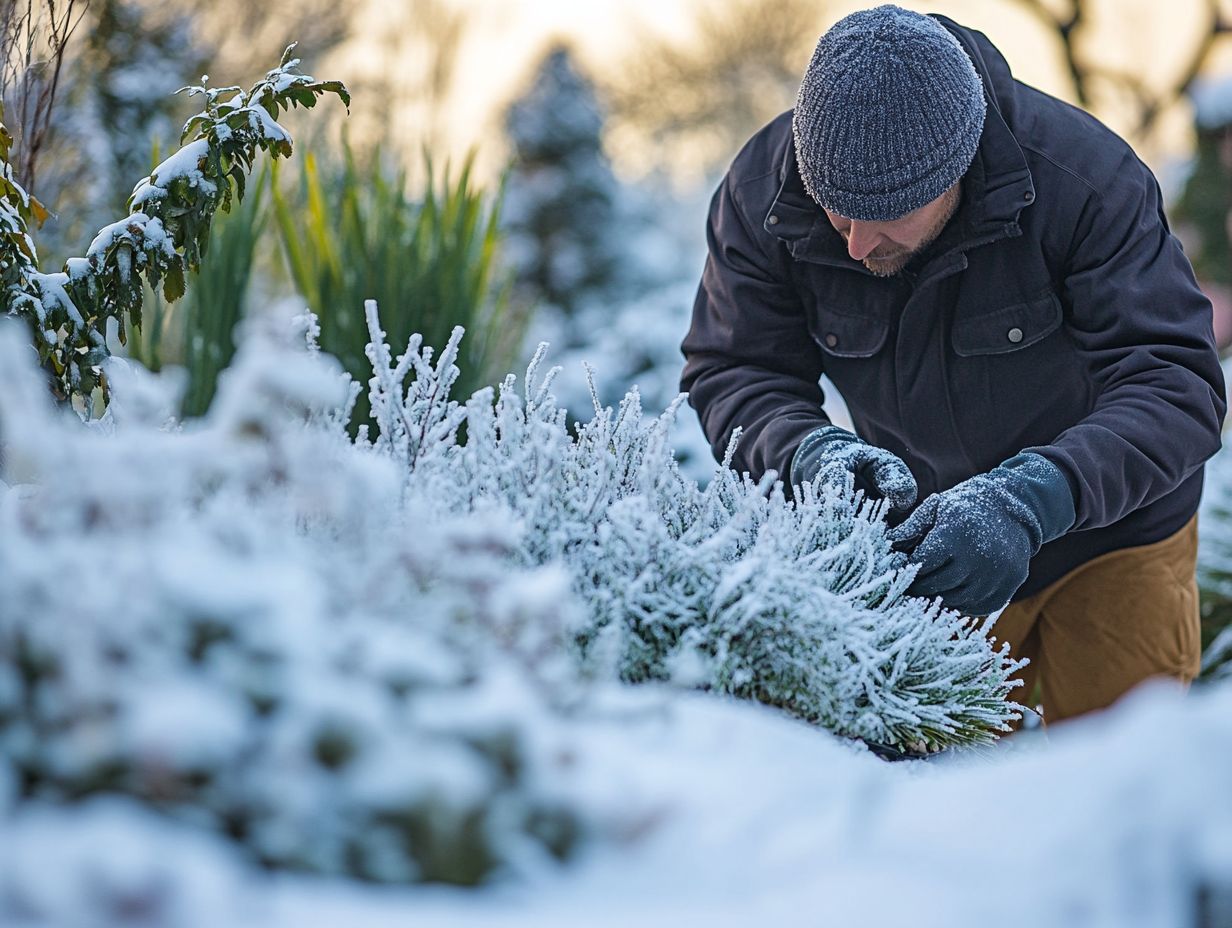
Caring for your plants during the winter season is crucial for preserving their health and vitality, especially in colder climates like Wyoming. Implementing essential cold-climate gardening techniques for proper watering and nutrient management is vital, as plants can remain active even if at a slower pace.
Techniques like pruning and regular maintenance greatly enhance their resilience against harsh winter conditions. By mastering these care methods and following the best practices for winter planting, you prepare your plants for survival and set the stage for a thriving garden once the weather warms up.
Maintaining Proper Watering and Nutrient Levels
Maintaining proper watering and nutrient levels during winter gardening is essential for ensuring the health of your plants, particularly as soil temperatures drop.
In this season, it’s easy to overlook the importance of monitoring moisture levels, especially when reduced evaporation rates might trick you into thinking your plants need less water. Despite the colder and drier air, root activity persists, so a careful balance in your care routine is required.
Check the soil moisture weekly by dipping your fingers into the earth or using a moisture meter. If the soil feels dry an inch below the surface, it s time to give your plants a drink.
Assess and adjust nutrient levels as well; your plants still require essential elements to thrive even in the cooler months. Incorporating best practices for winter watering will significantly enhance your plants’ vitality and ensure they’re primed for robust growth when spring arrives.
Pruning and Maintenance Techniques
Pruning and maintenance techniques designed for cold climates can significantly boost plant health and resilience during winter. By employing the right methods, such as following the best practices for planting in cold climates, your plants can endure the frigid temperatures and flourish when spring finally arrives.
Understanding the optimal timing for pruning typically late winter or early spring before new growth kicks in enables you to make targeted interventions that foster robust structural growth. Additionally, practices like mulching and proper watering safeguard roots from frost and help retain moisture without creating a soggy mess.
By integrating these strategies, you enhance the overall vitality of your plants and prepare them to tackle seasonal challenges in colder regions, especially by making sustainable plant choices for cold climates.
Plant Care in Early Spring
Plant care in early spring is a pivotal moment in your gardening journey, especially when transitioning plants from winter dormancy to vibrant growth in colder climates like Wyoming.
As temperatures begin to rise, this is your cue to start sowing seeds for cold-tolerant crops such as spinach and kale. Fine-tune your practices to align with the seasonal shift.
This transitional phase is crucial for ensuring that your plants are primed to thrive throughout the growing season. Harness the benefits of warmer weather and longer hours of daylight while being aware of frost dates specific to your area.
Start preparing your plants today!
Transitioning Plants from Winter to Spring
Transitioning your plants from winter to spring requires a keen understanding of their specific needs as they emerge from dormancy. This process is essential for promoting healthy growth and enhancing resilience.
Start by assessing the hardiness of your plants. Hardiness refers to how well plants can survive cold conditions. Remember, different varieties have varying tolerance levels to temperature changes. Knowing when to introduce them to warmer conditions is pivotal. A gradual acclimatization helps them adapt without shocking their systems.
Monitor these environmental factors closely. This ensures a smoother adaptation, ultimately nurturing vibrant gardens filled with herbs and hardy perennials. Factors such as humidity, light exposure, and soil temperature play a vital role in this transition.
Dealing with Frost and Freezing Conditions
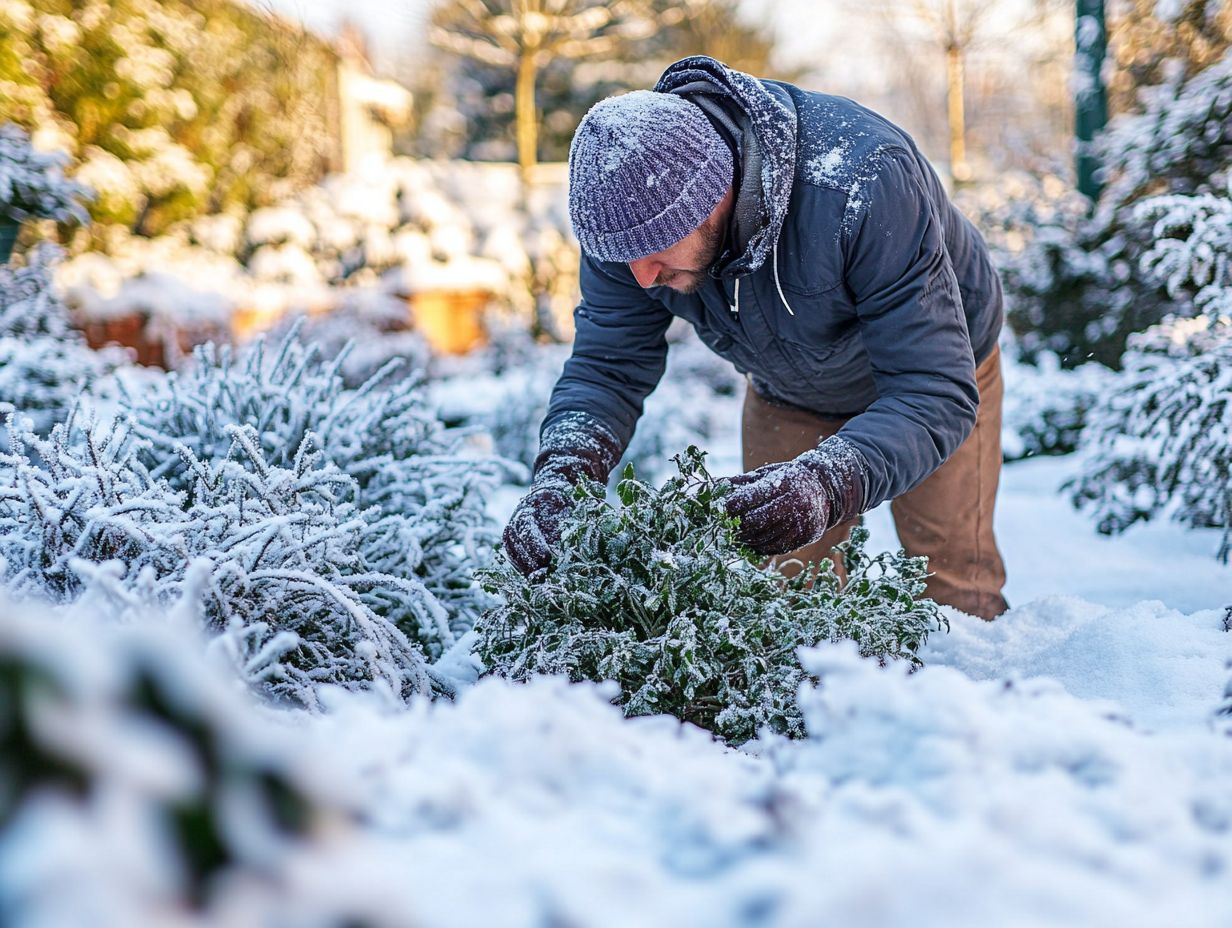
Navigating frost and freezing conditions demands thoughtful planning and proactive measures for any gardener, especially in colder climates like Wyoming. Here, gardeners must consider local gardening practices. Familiarizing yourself with frost dates and employing protective tactics such as row covers and hoop houses can greatly improve your plants’ chances of survival.
Creating microclimates within your garden helps buffer against sudden temperature drops. This ensures that your crops whether vegetables or herbs remain well-protected until the warmth of spring takes hold.
Strategies for Protecting Plants from Frost Damage
Implementing effective strategies to protect your plants from frost damage is crucial for achieving gardening success in colder climates. Learning essential pruning techniques for cold climates ensures that your plants can withstand the challenges presented by the cold.
You can use row covers, which act as a lightweight barrier to safeguard your delicate crops from unexpected temperature drops. You can also use hoop houses for robust protection while still allowing sunlight to nurture your plants.
Timing is everything apply these protective measures ahead of forecasted frosts to enhance their effectiveness. Ensure the covers are secure yet ventilated to prevent overheating on milder days.
By carefully selecting the right materials and keeping an eye on weather forecasts, you can significantly minimize the risks of frost damage while fostering healthy plant growth.
Choosing Cold-Resistant Plants
Choosing cold-resistant plants is key! It can make your garden thrive even in the toughest winters, like those in Wyoming, where temperatures can drop dramatically. By selecting varieties that thrive in your local plant hardiness zones, you can ensure a bountiful vegetable harvest, even in the chillier months.
Heirloom seeds often offer distinctive options that flourish in colder climates, making them an outstanding choice for your gardening efforts. With thoughtful plant selection, you can position yourself for success as you tackle the challenges of gardening in a cold climate.
Best Plant Options for Cold Climates
When gardening in cold climates, selecting the right plants is essential for ensuring a successful harvest. Choosing cold-tolerant varieties extends your growing season and provides a delightful variety of vegetables and herbs that thrive in less-than-ideal temperatures.
Consider hardy favorites like kale, spinach, and broccoli; these resilient options can withstand frost, making them perfect for early spring or fall planting. Herbs like parsley and chives also show remarkable resilience in cooler weather.
Utilizing heirloom seeds can elevate your gardening experience. These varieties are well-suited for local conditions and often boast unique flavors and characteristics. By incorporating heirloom plants, you re not just preserving biodiversity you re contributing to sustainable practices, enriching your garden even in challenging climates.
Frequently Asked Questions
What are some general best practices for plant care in cold climates?
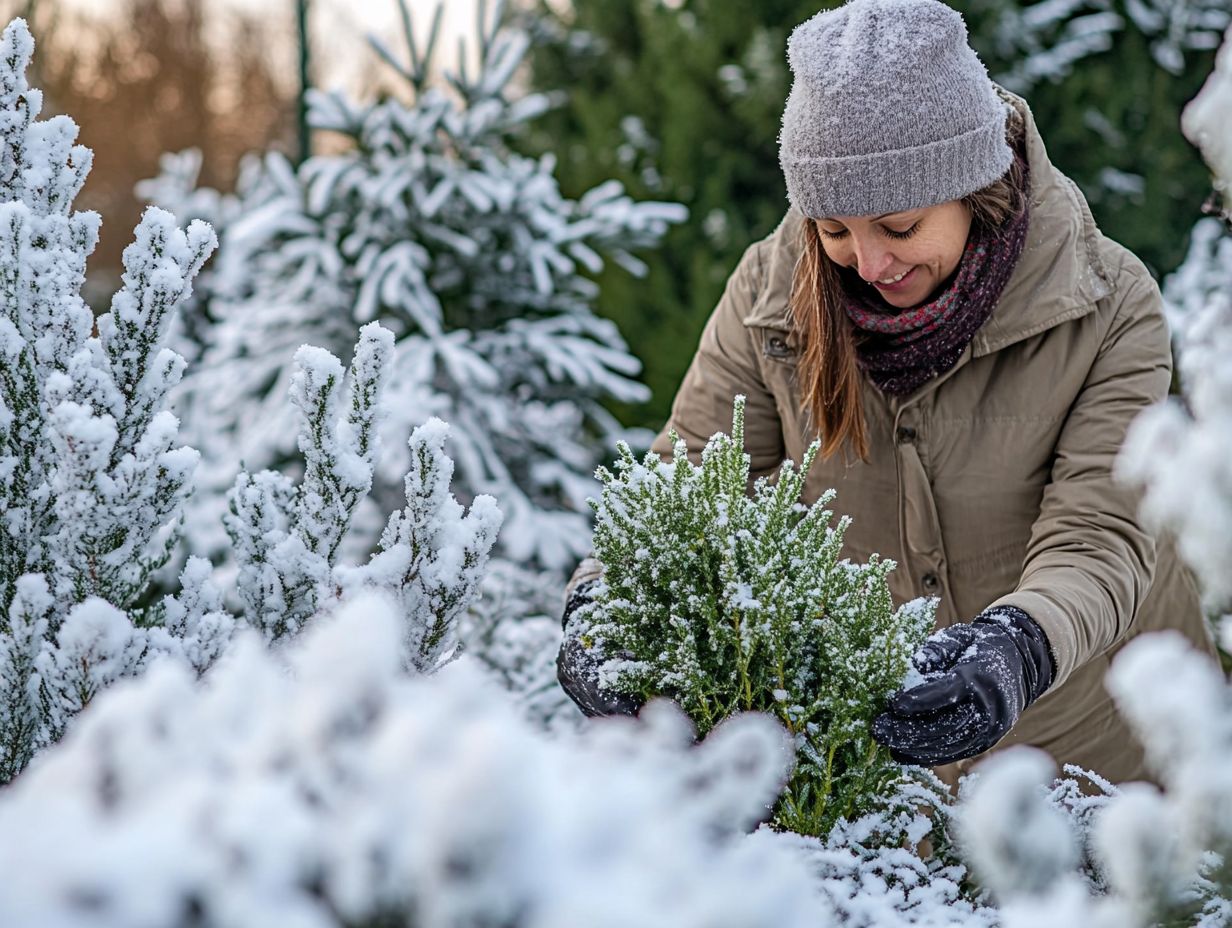
Use mulch to protect plant roots.
A windbreak can shield plants from harsh winds.
Regularly check for signs of frost damage.
How often should I water my plants in a cold climate?
The frequency of watering depends on the type of plant and soil conditions.
Avoid over-watering in cold climates, as excess moisture can harm roots and lead to fungal growth.
What types of plants thrive in cold climates?
Plants native to cold climates, like conifers and evergreens, thrive in colder temperatures.
Research to choose plants that are best suited for your specific climate.
How should I prepare my plants for the winter in a cold climate?
Trim any dead or damaged branches before winter.
Apply a layer of mulch around the base of the plants and wrap delicate ones in burlap for protection.
Continue watering until the ground freezes to ensure roots have enough moisture.
What are some signs of frost damage on plants?
Look for blackened or wilted leaves and mushy or discolored stems.
If you notice visible ice crystals on the plant’s surface, take immediate action to protect it!
Is it necessary to fertilize plants in a cold climate?
Generally, you don t need to fertilize plants during the winter months.
The best time to fertilize is in spring when plants are actively growing. Some slow-release fertilizers may help certain plants in the fall.

